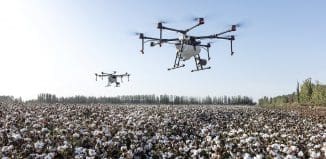New Approach – UAV Embedded Data Processing Systems
This post is also available in:  עברית (Hebrew)
עברית (Hebrew)
The enormous amounts of video data collected by unmanned aerial vehicles (UAVs) today reflect the urgent need to automate the processing and analysis of this data to the greatest extent possible. The introduction of software that can automatically detect potential objects in real-time through analysis of aerial surveillance video over land and water has enabled operators to make sense of this deluge of data, producing actionable intelligence.
Taking this mission-critical intelligence, surveillance and reconnaissance (ISR) capability to the next level of performance has required embedding the detection capability into the air vehicle itself.
While under the traditional data-processing model, raw video would be fed from a UAV down to the ground to be processed at the ground station, today innovation has opened up new opportunities. The processing system can now be embedded along with the sensor aboard the aircraft.
With onboard data processing, the data is analyzed in its purest form, without degradation, enabling autonomous detection systems to find very small objects across much wider areas than previous possible – having a significant effect on the usefulness of each UAV.
This also helps to reduce bandwidth requirements.
An object-detection system known as Kestrel, developed by the Australian company Sentient Vision Systems, is a miniaturized autonomous detection software that enhances situational awareness for operators, available for integration with the full range of current and future UAVs, according to suasnews.com.
Kestrel is capable of working autonomously and persistently to detect movement within electro-optical (EO) and infrared (IR) video, picking up objects that would be too small or slow-moving for the human eye to see, particularly when the operator is fatigued.
The software displays a trail of ‘breadcrumbs’ that indicate the path taken by each detected object. This makes the process of scanning an area for potential threats as streamlined as possible.
The technology has already been deployed on more than 1,700 systems around the world with a wide range of manned and unmanned air platforms. It is proven in theatre in support of the Australian Defence Force (ADF), the USA and Canada. Having been introduced into service in 2010, Kestrel has since been deployed as an integral part of all of the ADF’s operational unmanned systems, including the Royal Australian Air Force’s Heron and the Australian Army’s Shadow and ScanEagle.
The technology will be deployed by the ADF with its new Wasp AE micro air vehicle capability, which is set to be delivered by AeroVironment over a three-year period from July this year.






























